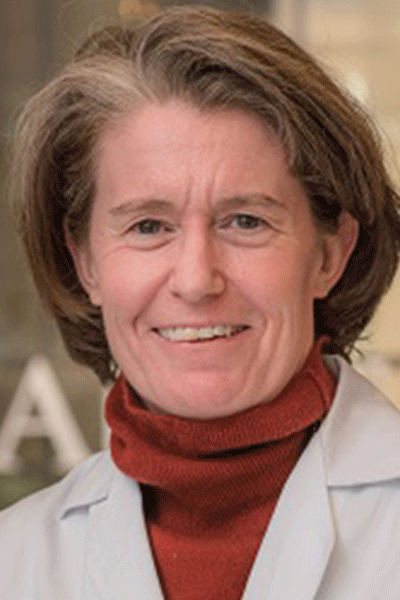
In one of two SABCS 20 Plenary Lectures, Elizabeth A. Mittendorf, MD, PhD, discussed local regional therapy considerations after neoadjuvant chemotherapy and summarized some of the key “knowns” and “unknowns” related to the topic.
Dr. Mittendorf is the Robert and Karen Hale Distinguished Chair in Surgical Oncology and Associate Chair for Research in the Department of Surgery at the Brigham and Women’s Hospital. She is also the Director of the Breast lmmuno-Oncology program and Co-Director of the Breast Cancer Clinical Research Program at the Dana-Farber/Brigham and Women’s Cancer Center.
The Knowns
Neoadjuvant chemotherapy is commonly used in the treatment of patients with breast cancer, particularly those with HER2-positive or triple-negative disease. Giving chemotherapy prior to surgery and looking at the response informs prognosis and the need for additional adjuvant therapy, Dr. Mittendorf said.
It is known that neoadjuvant chemotherapy can decrease the size of the primary tumor, making inoperable tumors operable and making patients thought to require mastectomy candidates for lumpectomy, she said, noting that there is no difference in local regional recurrence by surgery type.
In addition, local regional recurrence rates are no different in patients down-staged to breast-conserving therapy (BCT) when compared with those who were candidates at presentation. Neoadjuvant chemotherapy can also decrease the extent of axillary surgery required.
The Unknowns: A Longer List
In an effort to highlight knowledge gaps regarding the optimal imaging modality to assess response, Dr. Mittendorf discussed a case of a 54-year-old patient with a 2-cm palpable mass and freely mobile palpable axillary lymph nodes. The core biopsy confirmed invasive ductal carcinoma grade 3 that was ER/PR-negative and HER2-positive. Fine needle aspiration (FNA) of lymph nodes was positive for metastases and she was given a clinical stage of cT2N1.
At the end of systemic therapy, the mass was no longer palpable and axillary exam was normal. The mass decreased in size to 1.2 cm at its greatest dimension, but calcification was not changed.
Data regarding the need for excision of such post-chemotherapy calcifications indicate that the combined assessment of loss of MRI enhancement and changes in calcification on mammography does not predict the presence of pathologic complete response with sufficient accuracy to be clinically useful.
“The current recommendation for patients is that we need to surgically excise all calcification as well as the entire extent of MRI enhancement,” Dr. Mittendorf said.
To date, MRI is the best imaging modality to assess response to neoadjuvant chemotherapy, and in her practice, Dr. Mittendorf said she routinely uses it for patients that she is trying to downstage to BCT.
Another unknown is the role of sentinel lymph node biopsy (SLNB) and what the optimal SLNB technique is for patients with clinically node-positive disease who convert to node-negative with neoadjuvant chemotherapy. Looking at data from three trials—ACOGSOG Z1071, SENTINA, SN-FNAC—the false-negative rate in these trials was about 13%. There are several emerging ways to decrease this rate including the use of dual tracers, clipping the FNA positive node, and removing three or more lymph nodes.
There are also unknowns for colleagues in pathology, Dr. Mittendorf said, including whether immunohistochemistry (IHC) should be routinely used for SLN evaluation. Based on existing data, she recommends that, “IHC be used routinely for SLN evaluation and all IHC positive nodes should be considered positive and promptly dissected.”
Another active question under evaluation is the role of radiation. The NSABP B-51/RTOG 1304 trial, which is currently accruing patients, will randomly assign patients to regional nodal radiotherapy or no nodal radiotherapy, with the primary aim of evaluating whether the addition of regional nodal irradiation will improve disease-free survival rates in clinically node-positive patients who convert to ypN0. Alliance A011202 is a companion trial that will aim to determine whether axillary radiotherapy alone is non-inferior to axillary lymph node dissection plus radiation in women with T1-T3 breast cancer.
Finally, Dr. Mittendorf addressed the question of whether “exceptional responders” to neoadjuvant chemotherapy can forego surgery. The NRG-BR005 study presented at the 2019 SABCS, she said, addressed this question and found that the data did not support BCT without surgery.
SABCS registrants have exclusive on-demand access to Dr. Mittendorf’s lecture, “Local Regional Therapy Considerations After Neoadjuvant Chemotherapy: Minding the Knowledge Gaps,” and other virtual SABCS programming until March 13, 2021.

